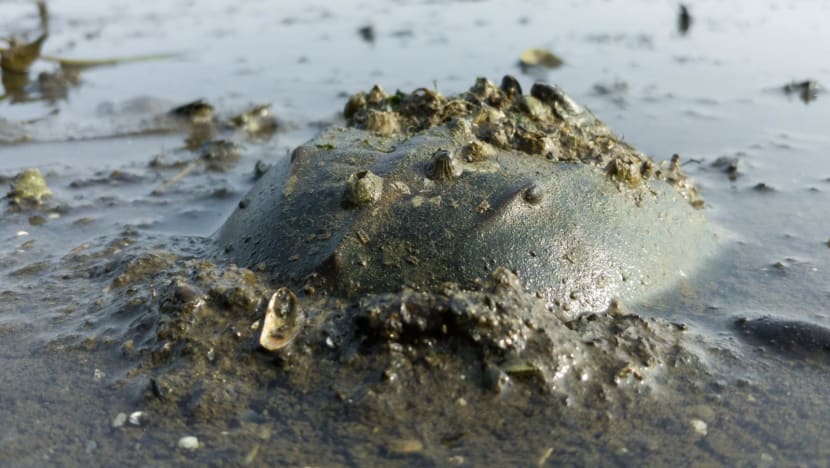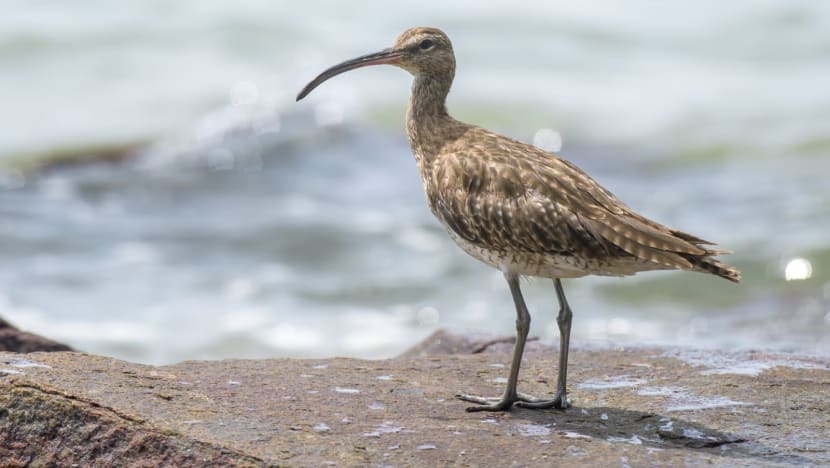Rising seas and warming weather threaten vulnerable native flora and fauna in Singapore
A recent climate projection citing progressively hotter days and the inevitable rise of the mean sea level has painted a gloomy picture for some of Singapore’s flora and fauna.

Early morning in the mangrove at Sungei Buloh Wetland Reserve. (Photo: Dan Friess)

This audio is generated by an AI tool.
SINGAPORE: Rising sea levels and warming weather could potentially mark the end of vulnerable native animals and plants that call Singapore home.
A recent climate projection citing progressively hotter days and the inevitable rise of the mean sea level has painted a gloomy picture for the flora and fauna at risk.
Conservation advocates are sounding the alarm on the increasing threat to these habitats and the species within them, and calling for a nation-wide effort to reduce carbon emissions and protect the precious pockets of nature.
MANGROVES COULD DROWN
Ecosystems in low-lying areas are particularly susceptible to rising tides brought by climate change. Among them are Singapore's mangrove forests, which are crucial to a plethora of local wildlife.
“With the rising sea level, we lose our sedimentation. Without sedimentation, our mudflats and mangroves may not keep up with the sea level rise,” said Mr Lester Tan, a member of the Nature Society Singapore (NSS), a non-government conservation organisation.
He warned that the nation’s mangroves could potentially drown if the sea level rises by just one metre – a scenario that could become a reality by the year 2100, according to the latest National Climate Change Study.
Updated projections from the report, which was released last Friday (Jan 5), said the mean sea level around Singapore will rise even higher than previous estimates.
The findings from the Center of Climate Research Singapore are based on three climate change scenarios of low, medium and high carbon emissions.
In the worst case scenario, the increase in mean sea level is projected at between 0.54m and 1.15m, which could spell trouble for mangroves and other coastal habitats.
“Sandy shores, mudflats, coral reefs, seagrass meadows – they will be largely affected… and these act as a nursery for many fishes and marine organisms … This means future generations may not be able to enjoy our nature reserve areas like Sungei Buloh,” said Mr Tan.
SPECIES AT RISK
The mangroves’ demise would also affect native species like the mangrove horseshoe crab, which is already listed as vulnerable.

The encroaching sea could also wipe out their coastal cousin – the coastal horseshoe crab – that is already endangered largely from habitat loss.
These prehistoric horseshoe crabs have been around for the past 400 million years, and used to be found in abundance in Singapore until urbanisation drove down their numbers.
“We have already started losing sight of these horseshoe crabs and they have diminished all the way to the northwestern part of Singapore,” said Mr Tan, who is the chairman of the NSS’ Marine Conservation Group.
“Small pockets (can still be found), but with the constant sea level rise, warming waters, loss in sedimentation … we will perhaps get less and less of these horseshoe crabs in our shorelines.”
The freshwater crab, a critically endangered crab found only in Singapore, faces the risk of extinction if temperatures continue to rise and their habitats dry up.

“It's difficult for freshwater crabs to swim across the sea to Malaysia or Indonesia, so they are stuck here,” said NSS President Dr Yeo Seng Beng.
As the species does not exist anywhere else, it is also critically endangered globally and hence could easily go extinct.
“History won't be kind to Singapore if we allow endemic species which only exist here to disappear,” he added.
Losing these habitats also puts other wildlife at risk of losing shorelines to breed, nest and feed, including the endangered hawksbill turtles that come in on the tides.
Migratory birds flying in for the summer, which make up about half of all birds found in Singapore, will also be affected.
They include the Eurasian Whimbrel, the Common Redshank and the Pacific Golden Plover, which are common visitors to the nation's mudflats and coastal areas.



Diminishing nature means they will lose their foraging ground along their migratory routes, said Dr Yeo.
“In ecosystems, every species is interconnected. You can’t affect one species without affecting the other. We should look at how (entire) habitats are affected by climate change,” he said.
EFFECTS ON HUMANS
Disappearing nature could also cause substantial problems for humans as well.
“Apart from losing our scenic views and natural heritage, we lose ecosystem services, such as carbon sequestration. We have less nurseries for fishes to grow, and we lose nature-based solutions to erosion and coastal issues,” said Mr Tan.
Mangroves can absorb carbon dioxide from the atmosphere four times more efficiently than other forest types, and store that carbon for thousands of years in their waterlogged soils.
They also protect coastlines by breaking sea waves during storm surges and help shield seagrass beds and coral reefs from the effects of siltation.
Animals who have lost their homes could also venture into human spaces, leading to forced interactions and increasing the risk of the spread of diseases, said Dr Yeo.
A NATIONAL EFFORT
The National Parks Board (NParks) is putting in place measures to protect some of these critically endangered species.
For instance, the agency last year successfully bred freshwater crabs in captivity and released them into the wild in hopes of establishing more colonies in nature sites around the island.
Aside from government initiatives, Singaporeans must also do their part, said advocates.
“For everyday folks, the basic rules of conservation such as reducing waste, using public transport and minimising the use of air conditioning could help to reduce carbon emissions and help to mitigate the effects,” said Mr Tan.
The study also projects best-case scenarios in which countries around the world meet their net zero targets. With a low emissions setting, mean sea level is set to increase up to 0.74m at the end of the century and temperatures are expected to rise 1.8 degrees Celsius.
Dr Yeo said it is the only scenario to strive for.
“It's a document that not only warns us about the future, but also tells us which direction we should go. We should take it quite seriously if we want to change the future,” he said.
“For the good of our future generations, there has to be a change in mindset and everybody has to be involved. Every individual can change their lifestyle to put us on a path where we have much less of a carbon footprint.”








.JPG?itok=eQ7kDzRv)


.JPG?h=943e32dc&itok=KvAtm0Y9)








